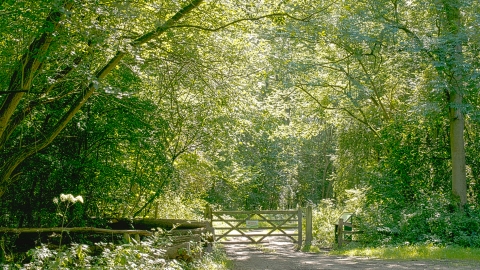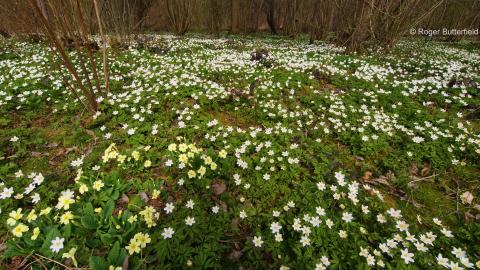
(c) Peter Gill


© John Smith

Quinton Quayle
Treswell Wood Nature Reserve
Location
Know before you go
Dogs
When to visit
Opening times
Open at all timesBest time to visit
Wildflowers in Spring & SummerAbout the reserve
This wood is one of the best examples of an ash/oak/maple wood in Nottinghamshire. The canopy is dominated by ash with the majority of the oak restricted to the southern part of the wood. The shrub layer comprises hazel, field maple, Sallow and guelder rose. Flowering plants include many indicative of ancient woodland such as wood anenome, bluebell and primrose.
Ponds within the reserve support marsh marigold, yellow iris and water crowfoot and are home to great crested and smooth newts as well as more than 12 species of water beetle.
Stoats and foxes are regularly seen in the woodland and large molehills are evident. An extensive bird-ringing programme started in 1972, which included a major nest-box scheme. A common bird census has been undertaken since 1976. The woodland birds include woodcock, jay, great spotted and lesser-spotted woodpecker, nuthatch and, in summer, blackcap, garden warbler and spotted flycatcher. The speckled bush cricket can be found in the wood, being on the northern edge of its range and another indicator of the wood’s age. In 1995 the wood was chosen as the site for the reintroduction of the dormouse in Nottinghamshire with a further introduction in 2013. The population of dormice is monitored by the Nottinghamshire Dormouse Group and seems to be doing very well.
Species
Habitat
Contact us
Environmental designation
Lost Woodland Recovery
In 2013 Nottinghamshire Wildlife Trust launched an appeal to buy a piece of land adjacent to Treswell Wood Nature Reserve. The aim of the appeal was to buy the land to extend the woodland for the first time in 1000 years by allowing native trees to regenerate naturally. A significant area of meadow has also been created along with a sizeable pond. By allowing natural regeneration we hope the new addition to the reserve will provide a buffer for the established woodland and it is hoped that in the long-term, self-seeded ash trees may develop a natural resistance to the threat of ash die back disease. Below we have some footage of how well the land is recovering over the years.
Treswell Wood Assart update 2024 (https://youtu.be/2Mzu1hePCpY)
2024 credit Quinton Quayle
Treswell Wood - Comparison 2019 vs 2022 (https://youtu.be/12cqe51crDo)
Video © Quinton Quayle of Quayle Industries Ltd
More Videos
Treswell Wood - Update Aug 2022 (https://youtu.be/eRk40AjltHo)
Video © Quinton Quayle of Quayle Industries Ltd


